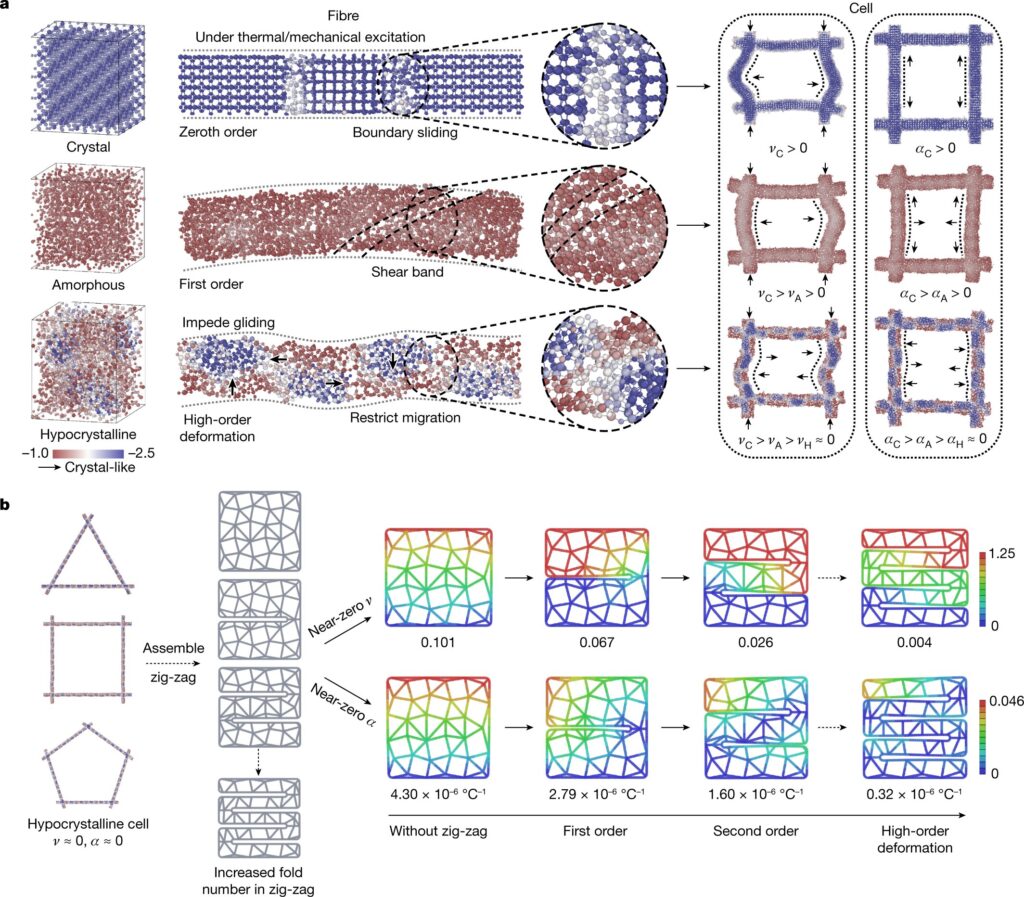A team of researchers in China and the U.S. developed a new type of aerogel that can be used in flexible thermal insulation material applications. The group describes how they made their aerogel in their paper published in the journal Nature.

aerogels made with ceramic materials work well as thermal insulators, with low densities and low thermal conductivity. Flexible material applications, such as suits for firefighters, are not possible because of the brittle materials.
They break down when they are exposed to high temperatures. The method for making a ceramic-based aerogel that can be used in flexible applications and also does not break down when exposed to high temperatures has been developed by the researchers.
The researchers used a novel approach to create their aerogel, pushing a zirconium-Silicon precursor into a chamber with turbulent air and spinning it into a ceramic material that looked like cotton candy.
They folded the material into a zig-zag pattern and heated it at 1100 0C. The material was changed from a glassy state to a nanocrystal by heating it. The creation of a flexible aerogel using a ceramic that was not prone to breaking down under high temperatures was the result of the study of the resulting material.
The researchers applied a butane blowtorch to an airplane fuel tube and then used it to insulate it. They found that using a generic polyimide barrier allowed the temperatures in the tube to reach 267 oC, while a conventional aerogel kept the temperature to 159 0C and the new gel kept it at just 33 0C.
The material was flexible enough to be used in flexible clothes, like those used to make protective clothing for firefighters.
Explore for More information
Jingran Guo et al, Hypocrystalline ceramic aerogels for thermal insulation at extreme conditions, Nature (2022). DOI: 10.1038/s41586-022-04784-0
LATEST CHEMISTRY RESEARCH